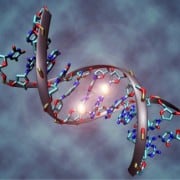Low Dose Naltrexone (LDN) for Autism
The History of LDN (Low Dose Naltrexone)
Naltrexone is a well tested and very safe drug. It was originally approved by the Food and Drug Administration in 1984 as a treatment for heroin, opium, and alcohol addiction due to its effectiveness in blocking the opioid receptors in the brain that drive the craving for both drugs. The dosage used is 50 mg/daily or more for these disorders. New York physician Bernard Bihari, MD, in working with hospitalized AIDS patients in 1985, was administering naltrexone to some patients to help addiction craving issues while they were being treated for AIDS. Cravings were helped, but their immune systems were responding negatively; he learned from a researcher at Penn State, Dr. Ian Zagon, that in research work with canines, naltrexone actually helped the immune system more when the dose was lowered.
Dr. Bihari lowered the dose and determined that ideal dosing to help immunity was much lower than the dose needed for addiction therapy. Because naltrexone was able to block opioid receptors, it also was effective at blocking the reception of opioid hormones that are produced by the pituitary and adrenal glands, including endorphins and enkephalins (specific types of endorphins that occur at the body’s nerve endings and act as transmitters).
Many of our body’s tissues have receptor sites for endorphins including nearly every cell in the immune system. This makes naltrexone an ideal treatment for managing pain, boosting immune function and, in many, boosting mood. Some parents of children who receive LDN in the form of a transdermal cream have called it the “happy cream,” noting that after starting it, their children began waking up happy for the first time. Dr. Bihari discovered naltrexone was able to accomplish these benefits in a low dose (between 1 to 4.5mg, rather than 50mg) taken only once a day at bedtime.
Since Dr. Bihari’s discovery, LDN has been shown to have benefits for a wide variety of illnesses related to low immune function beyond HIV/AIDS. These include virtually every known cancer as well as chronic fatigue syndrome, fibromyalgia, gastrointestinal disorders (celiac disease, colitis, Crohn’s disease, irritable bowel syndrome), lupus, multiple sclerosis (MS), Parkinson’s, rheumatoid arthritis, psoriasis, amyotrophic lateral sclerosis, and Alzheimer’s disease. While not a panacea for everyone, many patients with MS and other autoimmune disorders have been on this medication for many years without progression of their disease. The general consensus among those physicians administering LDN is that those with serious diseases such as MS and metastatic cancer who respond to LDN should take it indefinitely.
The Use of LDN for Autism
Some children with autism have been on LDN for two to four years, ever since I introduced it to the autism community in 2005. This includes my beloved granddaughter Chelsey, who adorns the cover of my book Children with Starving Brains: A Medical Treatment Guide for Autism Spectrum Disorder and is the inspiration for all my work in this field.
In 2005, while specializing in the bio-medical treatment of autistic children—who are immuno-compromised as shown by an inability to detoxify and having low glutathione levels compared to neuro-typical children — I conducted a clinical study with private patients on LDN to assess its help for immune status. As stated above, LDN is a very low dose of an FDA-approved and now generic (1997) drug, naltrexone, an opioid antagonist used for opioid and alcohol addiction at usual doses of 50mg/day.
Studies in autism conducted a decade earlier using full or higher doses of naltrexone showed benefit in some autistic self injurious behaviors (SIB). At the time, the connection between opioids and our immune systems was not widely known or understood. Autism researchers were hoping to counteract opioid effects of casein and gluten with opioid antagonism offered by naltrexone rather than subject children to dietary restriction (gluten-free/casein-free diets). Panksepp, Shattock, and other researchers noted variably better results with low doses. Studies of children using higher doses of naltrexone were more equivocal (showed less effectiveness), and non-compliance at any dose due to the bitterness of the drug posed a problem for autistic children, most of whom could not swallow pills. After it was learned that most cases of SIB were due to pain from gut inflammation that these children were unable to describe, treatments for this gut condition decreased the need of using naltrexone for SIB, although part of its effectiveness in the past may have been due to some then unknown immune system benefit.
Development of a transdermal LDN cream
In response to a request for an effective transdermal form of LDN for my clinical studies, molecular pharmacologist Dr. Tyrus Smith, then in 2005 at Coastal Compounding Pharmacy in Savannah, Georgia and now in 2010 at his new pharmacy Coastal Apothecary in Ridgeland, South Carolina, created an effective skin cream compounded with emu oil. This allowed easy adjustment of dosing (some of the smaller kids did better with only 1.5mg). The bitter taste of naltrexone was not an issue, and the cream could be put on the children’s bodies while they slept. Since LDN works with the circadian rhythm with the nightly endorphin output between 2 and 4 am, it is better if put on after 9 pm. The cream is put into syringes for easy measuring, with 0.5 ml providing 3mg for children. For adults, 0.5 ml provides 4.5mg. Most adults prefer capsules; cream and capsules are equally effective.
Our dose of 3mg of naltrexone for children and 4.5mg for adults is ultra-low, less than one tenth of the recommended dose of 50mg or more used daily for addiction. LDN must be compounded for “off-label” use in order to obtain the tiny doses required. In my private research studies (not published) I found that 16 out of 20 children (80%) increased their CD4+ count in 16 weeks of LDN usage and 70% of 28 parents of autistic children who participated in the study raised their CD4+ count as well. CD4+ is an important regulatory cell pivotal in AIDS. In my study population, almost all counts were within the normal range to begin with, so I was surprised that so many increased even more with the use of LDN.
LDN has shown itself to be a non-toxic, effective immune enhancer. It is non-addicting and inexpensive (the cost for a month’s supply of transdermal cream or oral capsule is $25-$40 depending upon where you order it). LDN is extremely easy to use, as one capsule or one transdermal application at bedtime is needed only once daily.
Benefits seen by parents
Many thousands of children with autism have used or are using LDN since it was introduced into the autism community in 2005.
While many things about autism are heart-breaking, one of the most tragic to me is the isolation and aloneness these children experience. Very often they can be seen playing by themselves, seemingly preoccupied with an inner life or with repetitiously manipulating or lining up toys or objects while oblivious of other children who are playing and relating on a nearby playground.
In a 200-parent survey on my Autism_LDN e-list, 75% rated LDN as “Overall Beneficial.” Although children are often prescribed this medication for immune benefit by their doctors, what parents seem to appreciate most is an increase in cognition, language, and socialization. I have dozens of letters and posts from grateful fathers telling me LDN has finally given them a relationship with their child, and from mothers who tell me that their child is playing with their siblings for the first time after starting LDN. The immune benefits take longer to show up than the social and mood benefits; I usually ask parents to give this intervention at least three months to see maximum immune benefit.
Sleep and contraindications
Although naltrexone is non-toxic and virtually free of side effects, occasionally it can cause sleep problems or hyperactivity during the first week or two of its use. If sleep problems persist, reducing the dose from 4.5mg to 3mg in adults, or in children from 3mg to 1.5-2mg, is often helpful. All of the children in my studies were on strict gluten-free, casein-free and soy-free diets. When LDN was introduced to the general autism population, I occasionally noted a child where negative reactions persisted. When children were not on a restricted diet, a negative reaction alerted me to the likelihood that LDN as an opioid antagonist might be disrupting their “fix” (addiction to wheat or milk) and often, if parents were willing to institute restriction of these large peptides through the special diet, LDN no longer caused negative reactions in many of that group.
The primary contraindication for LDN is the use of narcotic pain medications, and for children, the use of steroids, usually for gut inflammation. I request parents to not start their children on LDN until they are down to 10mg or less per day of prednisone and on their way to weaning off steroids completely.
Summary
LDN is joining our biomedical treatment arsenal as an effective, non-toxic, non-addicting, inexpensive behavioral and immune modulating and enhancing intervention to help more children recover from autism. It is also helping many persons with autoimmune diseases including HIV+ AIDS, MS, Crohn’s, fibromyalgia, and cancer—or any disease caused by immune impairment or endorphin deficiency. Currently used in ultra small doses as an “off-label” FDA approved medication, LDN must be physician-prescribed and compounded for the tiny dosing required.
The type of filler medium carrying the medication is very important. In order to provide the most benefit it should be hypoallergenic and provide immediate release in order to get the “jumpstart” needed for the brain to send a message out to the adrenal and pituitary glands, alerting them that the body needs more endorphins. As to the carrier, I personally prefer emu oil for transdermal use and Avicel for capsules. Avicel is a brand name for microcrystalline cellulose that will not interfere or interact with other nutrients, vitamins or minerals.










My granddaughter who is HFA with SIB and suicidal ideation is on LDN now. She just started last week and I am desperate. Can you tell me how long it takes for the mood effect? She is on 3 mg. She also has ADHD.
Thank you,
Angie
Hi Angie, I’m sorry to read that your granddaughter is dealing with such difficulties. I know it must be very hard for the whole family. There are not hard and fast rules on response to LDN. Reportedly, response can begin after a few days or take weeks or months. This is the main webpage for LDN, in case you haven’t seen it. HERE We wish you all the best. Sheila
Thank you for your reply.
I can not find one single study that says nightly endorphin output between 2 and 4 am! Please help me I need this desperately!! I know everyone and their mother says this but I cant find if this is really true and been harped for saying it over the years, ANYONE please reply with the link to prove this!!! THANKS
Presouz you are not understanding how LDN works. Your question doesn’t make sense. The reason endorphns release at that time when on LDN is because that is when the 4 hours of blocking wears off. LDN is a miraculous rx and know many people who this has helped greatly.